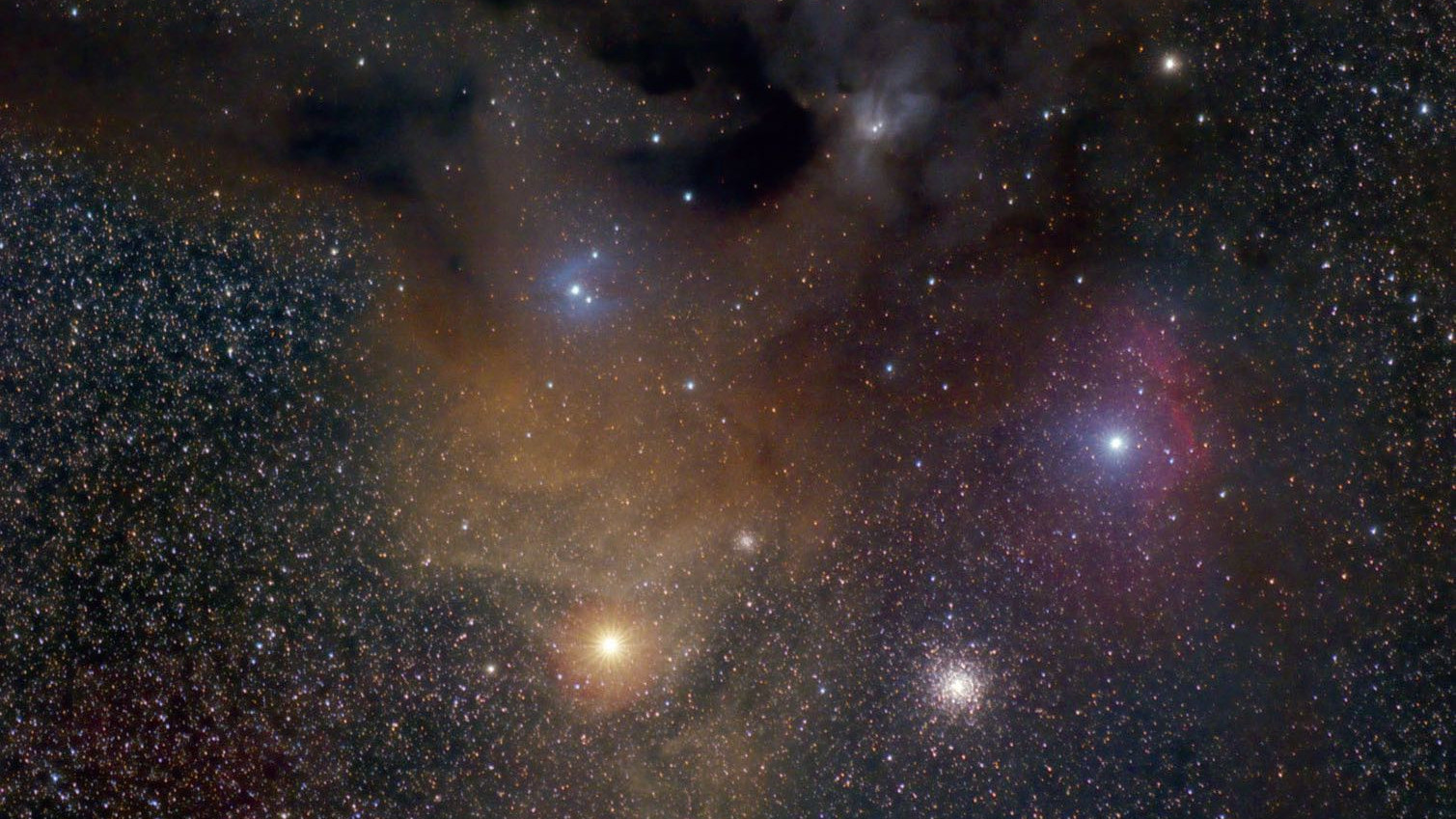In the claws of the scorpion
A great variety of globular clusters can be found in the vicinity of Antares, and M4 is just one degree away from the giant star.
 The colourful Rho Ophiuchi Nebula Complex and its surroundings: Antares is the bright, orange star below the nebula complex, to the right of it is the globular cluster M4. Jim Thommes
The colourful Rho Ophiuchi Nebula Complex and its surroundings: Antares is the bright, orange star below the nebula complex, to the right of it is the globular cluster M4. Jim ThommesThe constellation of Scorpius is one of the most impressive constellations in the night sky, however it is only visible in its entirety from Southern Europe. There, the haze at the horizon no longer affects observation, so you shouldn't forget your binoculars when you go on holiday! But you can take this tour even from Central Europe if the visibility conditions are good. It'll be worthwhile!
A variety of globular clusters
In photos, globular clusters often look very similar to one other, but even with binoculars we can see three very different examples on our tour. Around 1° west of Antares is the large and bright globular cluster M4. Although it cannot be resolved into single stars with binoculars, you can still make out its very grainy appearance. Attentive observers will be able to make out the “bar” that runs through its core.
Another Messier globular cluster in Scorpius is M80, which is located about 3.5° north of M4 and can be located from there via stars ς and ο Sco. However, M80 shines much more faintly, so that it can often only be seen as a round smudge in the haze at the horizon.
If we swing our binoculars 7.5° to the east of Antares, i.e. about the width of your field of view, past the boundary of the constellation towards Ophiuchus, we reach another Messier globular cluster, namely M19. This is characterized by its oval shape that can be seen through binoculars.
 Around Antares, there are numerous exciting objects to observe with binoculars. Kai v. Schauroth
Around Antares, there are numerous exciting objects to observe with binoculars. Kai v. SchaurothThree out of five
Star ρ Oph is best known for its colourful nebula of the same name, which is not visible with binoculars, though. But ρ Oph is itself interesting: it is a five-star system, of which three components can be easily resolved with binoculars if the visibility conditions are good, since they are all around 150" apart. It is relatively easy to find ρ Oph, since it is only 3° north of Antares or M4.
Practical tip
Saturn's great companion
At the time of writing, Saturn is just a few degrees from Scorpius in the constellation of Ophiuchus. Its ring system can only be seen with 30 times magnification or more, but one object for binoculars is Saturn’s largest moon Titan, which is magnitude 8.4 bright. It is important that its distance from bright Saturn is as great as possible. Suitable times for observing Titan can be determined using a planetarium app.
Author: Kay Hempel / Licence: Oculum-Verlag GmbH
